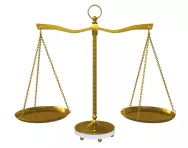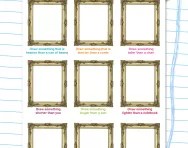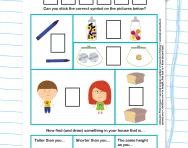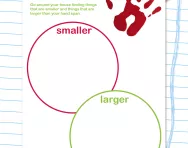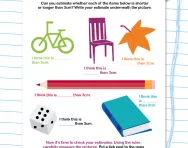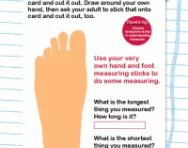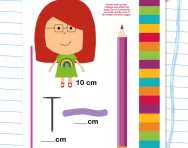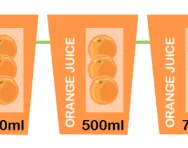Important update from TheSchoolRun
For the past 13 years, TheSchoolRun has been run by a small team of mums working from home, dedicated to providing quality educational resources to primary school parents. Unfortunately, rising supplier costs and falling revenue have made it impossible for us to continue operating, and we’ve had to make the difficult decision to close. The good news: We’ve arranged for another educational provider to take over many of our resources. These will be hosted on a new portal, where the content will be updated and expanded to support your child’s learning.
What this means for subscribers:
- Your subscription is still active, and for now, you can keep using the website as normal — just log in with your usual details to access all our articles and resources*.
- In a few months, all resources will move to the new portal. You’ll continue to have access there until your subscription ends. We’ll send you full details nearer the time.
- As a thank you for your support, we’ll also be sending you 16 primary school eBooks (worth £108.84) to download and keep.
A few changes to be aware of:
- The Learning Journey weekly email has ended, but your child’s plan will still be updated on your dashboard each Monday. Just log in to see the recommended worksheets.
- The 11+ weekly emails have now ended. We sent you all the remaining emails in the series at the end of March — please check your inbox (and spam folder) if you haven’t seen them. You can also follow the full programme here: 11+ Learning Journey.
If you have any questions, please contact us at [email protected]. Thank you for being part of our journey it’s been a privilege to support your family’s learning.
*If you need to reset your password, it will still work as usual. Please check your spam folder if the reset email doesn’t appear in your inbox.
Teachers' tricks for weights and measures
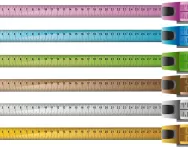
Make direct comparisons
At the beginning of primary school children will learn to simply compare one item against another in terms of weight, length, etc. At home you’re bound to do this naturally with them, for example when talking about taller friends or bigger pieces of food. To help reinforce this concept, you could give them five different items of different sizes and ask them to put them in order from smallest to largest. Equally, you could prepare them three bags with different amounts of dry rice in each. Get your child to feel each bag and decide which is heaviest, which is lightest and which is in the middle.
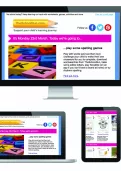
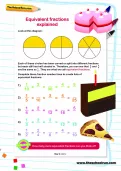
Boost Your Child's English & Maths!
- Weekly programme for each school year
- Worksheets sent direct to your inbox
- Keeps your child's learning on track
Encourage your child to use the correct vocabulary from as early an age as possible. The terms they'll use in the classroom include: longer than, shorter than, heavier, lighter, taller, wider, etc.
Measure using non-standard units of measure
Next, children learn to use non-standard units to measure. At school they might be using cups (for example, how many cups does it take to fill a water tray?) or pencils (how many pencils long is the table?) as their non-standard units. Talk to them about minimising the variables (or, in child-speak, “making sure it’s right”) by using the same-sized object to measure with every time. You could illustrate this point by measuring the kitchen table in their hand-span and then yours - they'll quickly realise that the results are very different!
Introduce standard units of measure
A key life skill children learn within this maths topic is how to measure accurately, using standard units (metres, centimetres, grams, kilograms, millilitres and litres).
When introducing standard units it’s a good idea to mention some of the problems (noted above) of using non-standard measures to give meaning to the use of rulers, scales and measuring cups.
When measuring objects together, really encourage your child to take their time and become accurate. (Baking is an excellent way to illustrate this point; have them read the scales and explain that if you aren’t accurate the result just won’t taste or look right!) As children move into Key Stage 2 they’ll be encouraged to measure length to the nearest millimetre. This is also an area of maths where your child will be encouraged to estimate (make a “clever guess”) and then check their estimate with an accurate measurement.
Learn conversion facts off by heart
In Key Stage 2 children learn how to convert various measures (from centimetres to millimetres and metres, for example). These are the facts they'll need to know:
| 10mm (millimetres) | = | 1cm (centimetre) |
| 100cm (centimetres) | = | 1m (metre) |
| 1000m (metres) | = | 1km (kilometre) |
| 1000g (grams) | = | 1kg (kilogram) |
| 1000ml (millilitres) | = | 1l (litre) |
Common KS2 maths problems involve working out the difference between two measurements given in different units of measurement.
Children will be asked questions such as:
Nathan is 72cm tall. John is 1.2m tall. How much taller is John than Nathan?
For this question, they will not only need to work out the difference between these two amounts, but they also need to convert the measurements so that they are both in centimetres or both in metres. If they convert them both to centimetres, they need to work out the difference between 72cm and 120cm.
Help your child at home by giving them two different-sized containers full of liquid (for example: a one-litre bottle of water and a 330ml can of lemonade) and ask them to work out how much more liquid is in the larger container than in the smaller one.
Get children used to choosing units and tools
It’s good practice to encourage children to decide for themselves what units and tools to use to measure with. They need to consider:
- How large the item is. If it’s a small length, for example, would millimetres be more appropriate than metres?
- What is the measurement for? For example, if it’s for baking it will need to be very precise and therefore standard units would be better than non-standard.
- Which unit is appropriate for capacity? For length? For weight?
You could help your child with this by giving them a tray of various objects picked from around the house. Ask them questions about the objects on the tray, for example:
- What type of equipment would you use to measure the length of the book? What unit of measurement would you measure it in?
- What type of equipment would you use to measure the weight of the pile of rice? What unit of measurement would you measure it in?
Try real-life problem solving
This maths topic lends itself well to practising problem-solving skills and story problems are often used to introduce much bigger units than the classroom would allow (so kilometres instead of just centimetres and metres). Help your child develop this skill at home by involving them in some of your own real-life problem solving. For example, how long it might take you to get to a destination that is x distance away if you were travelling at x km an hour? How might you need to adapt a recipe to feed extra guests? How much water should you add to concentrated squash to make the perfect drink?
